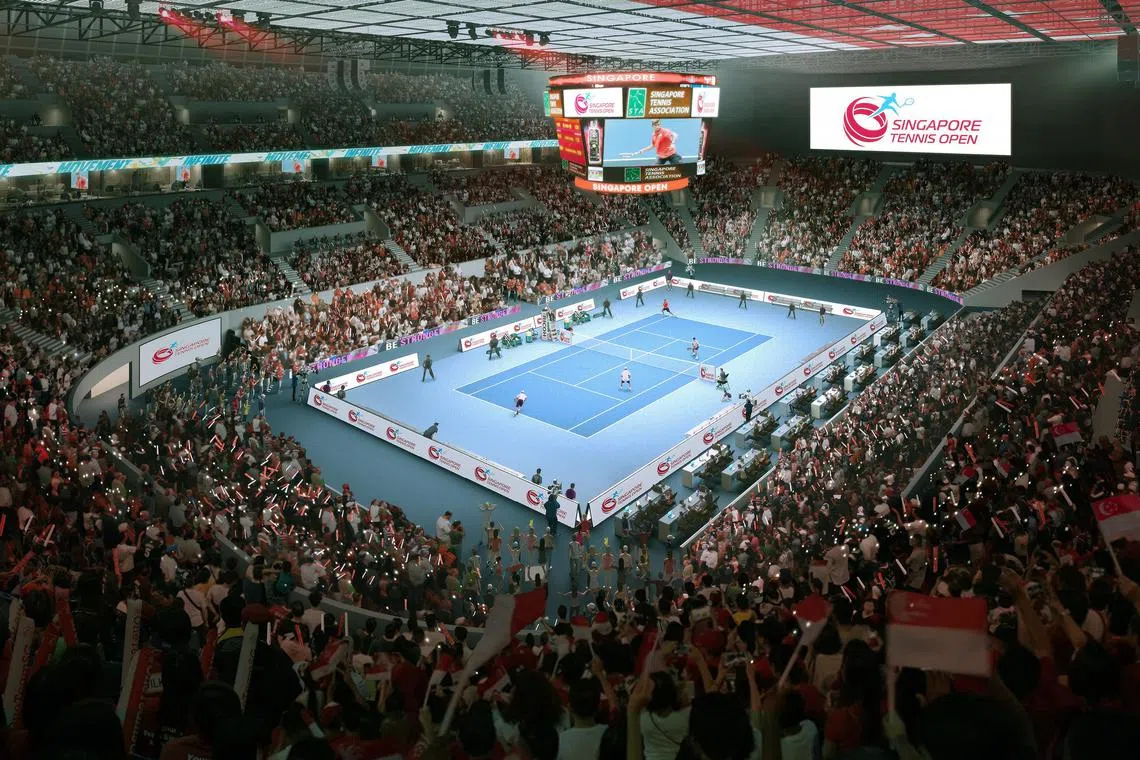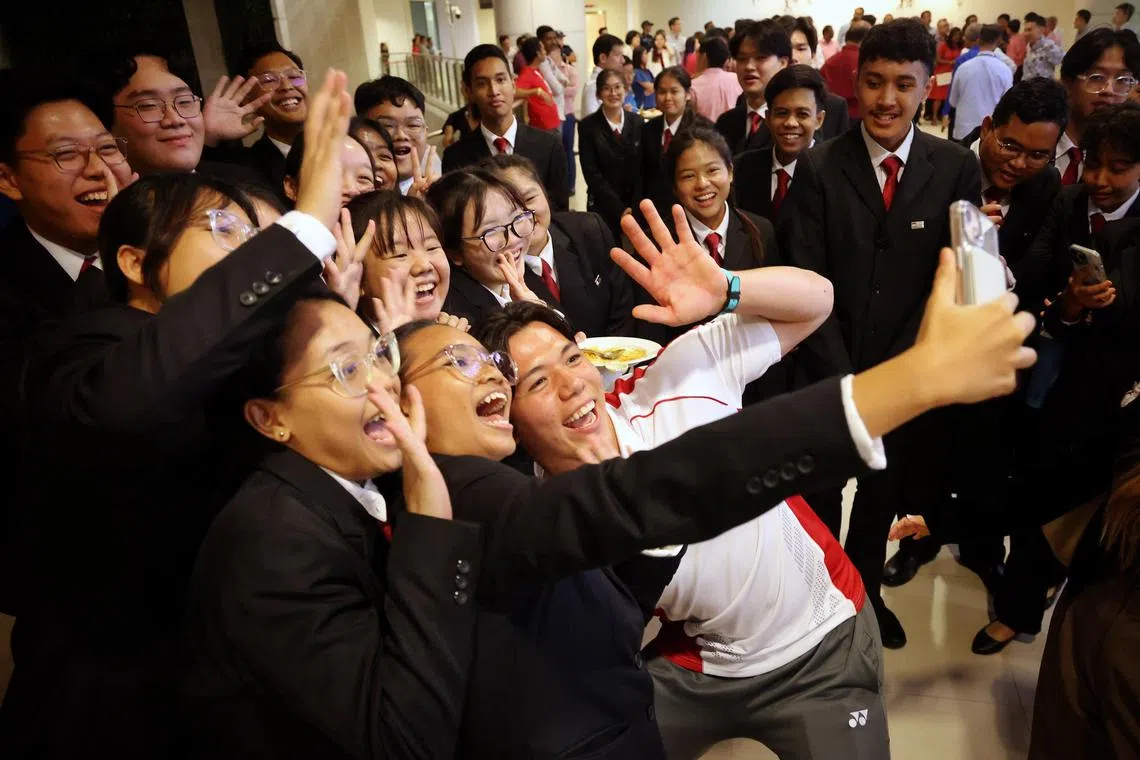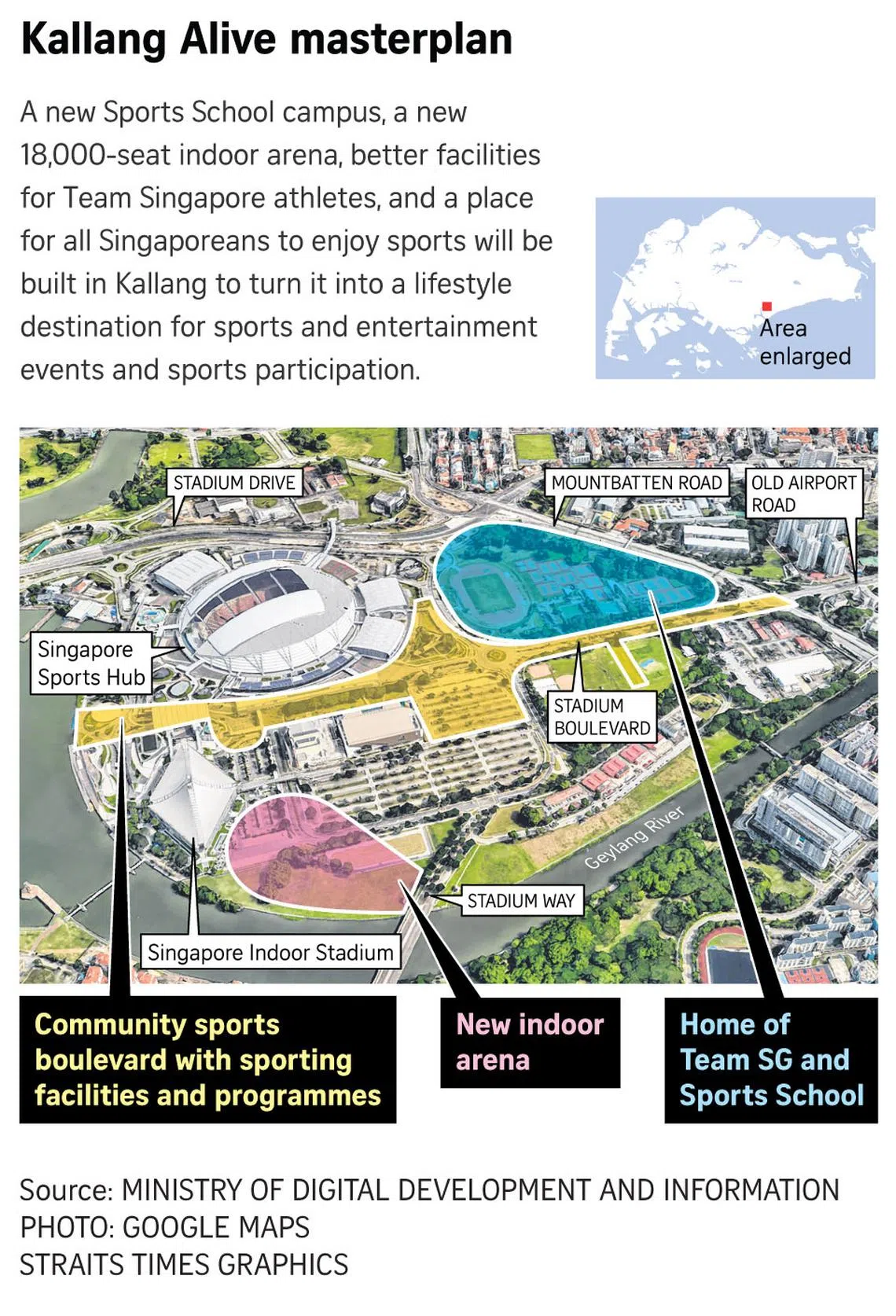New 18,000-capacity indoor arena at Kallang fills a gap among Singapore’s sporting venues
Sign up now: Get the biggest sports news in your inbox

An artist's impression of the new indoor arena, whose 18,000 capacity makes it a versatile space for hosting a wide range of events.
PHOTO: SPORT SINGAPORE
Follow topic:
SINGAPORE – A concert to cap a major indoor sporting event in Singapore may not seem like a feasible idea now, but that could be an option once the new indoor arena is up at Kallang.
While plans for the new facility were revealed in March, Prime Minister Lawrence Wong said in his National Day Rally (NDR) speech on Aug 18 that the new indoor arena will have a capacity of 18,000, higher than the Singapore Indoor Stadium
Singapore Badminton Association chief executive officer Alan Ow is looking forward to seeing how the new facility, to be built adjacent to the Indoor Stadium, will add to the Republic’s allure as a hub for major sporting and entertainment events.
He said: “It will provide a versatile space for hosting a wide range of events, including sports competitions, concerts, exhibitions and other entertainment shows.
“The increased seating capacity provides sports organisers like us with opportunities to think creatively and expand our event offerings. The additional seats make it financially feasible to consider innovative initiatives, such as including post-event concerts as part of the overall event experience.
“This opens up possibilities for attracting a broader audience demographic and enhancing the overall appeal of the event.”
Hosting top-tier sporting events can also help shift the mindset of corporate entities towards recognising the value of sports as a platform for branding, marketing and employee engagement, Ow added.
The new indoor arena will also “fill a hole” among Singapore’s venues for hosting events, said James Walton, sports business group leader at Deloitte Asia-Pacific, as it is ideal for events that are too big for the Indoor Stadium and yet too small for the 55,000-capacity National Stadium.
Walton told The Straits Times: “Once you get 10,000 to 12,000 for a sporting event, and you want to go bigger than that, then effectively, you need the National Stadium. There really is nothing else in Singapore that is reaching those levels now.
“Of course, there are a number of new stadium developments, from an outdoor point of view, happening around Singapore in the near future... but ultimately this (new arena) will fill a hole.
“But the more important thing, besides the capacity, is to have a facility that has the ability to host world-class events and has all the... requirements that mean that when we go and bid to host these international sporting events or concerts, people can get excited about the space that it’s being held in.”
During his NDR speech, PM Wong also revealed other sporting plans for Kallang, which include the relocation of the Singapore Sports School from Woodlands. It will be right next to new national training centres for some key sports and new sports science and sports medicine facilities, making it the new home of Team Singapore.
Sports officials and athletes told ST that they are energised by PM Wong’s announcements.
Singapore Aquatics president Mark Chay said having sporting plans in the Prime Minister’s maiden NDR speech also sends a signal that “we are creating a conducive environment for Singaporeans to pursue their passion in sport, to do Singapore proud and that the country will rally behind you”.
The Republic’s newly minted Olympic bronze medallist Maximilian Maeder,
The 17-year-old, a two-time world champion and Asian Games gold medallist, is looking forward to the new facilities for athletes.
He has benefited from the sports science support, having worked with the Singapore Sport Institute to change his body composition, making him stronger and more powerful.
A dietitian also made him more aware of his food options, while a physiologist monitored his cardiovascular fitness.

Olympic bronze medallist Maximilian Maeder posing for photos after the National Day Rally at ITE College Central on Aug 18.
ST PHOTO: JASON QUAH
Maximilian said: “Not only are your sports scientists technical support, they scientifically support you in terms of making your skills better or improving your fitness or making sure you sleep better, you eat better, whatever that may be.
“The fact that the facilities are so much more readily available and in one place and easily accessible in an inclusive environment makes it easier to get in, and makes it so easy within the ecosystem.”
Walton also believes that bringing the different sporting entities together allows for a “true centre of excellence for sports”.
He added: “As we see done in many other countries, the hope is that a community and ecosystem can form where people can learn from one another and grow together.”
Having the national training centres for different sports in a centralised location also gives athletes a sense of certainty for their training venues, said Dr Teo-Koh Sock Miang, president of the Singapore Disability Sports Council.
“This also allows athletes, both abled and disabled, to train together and build the Team Singapore family and team spirit and cohesion,” she added.



